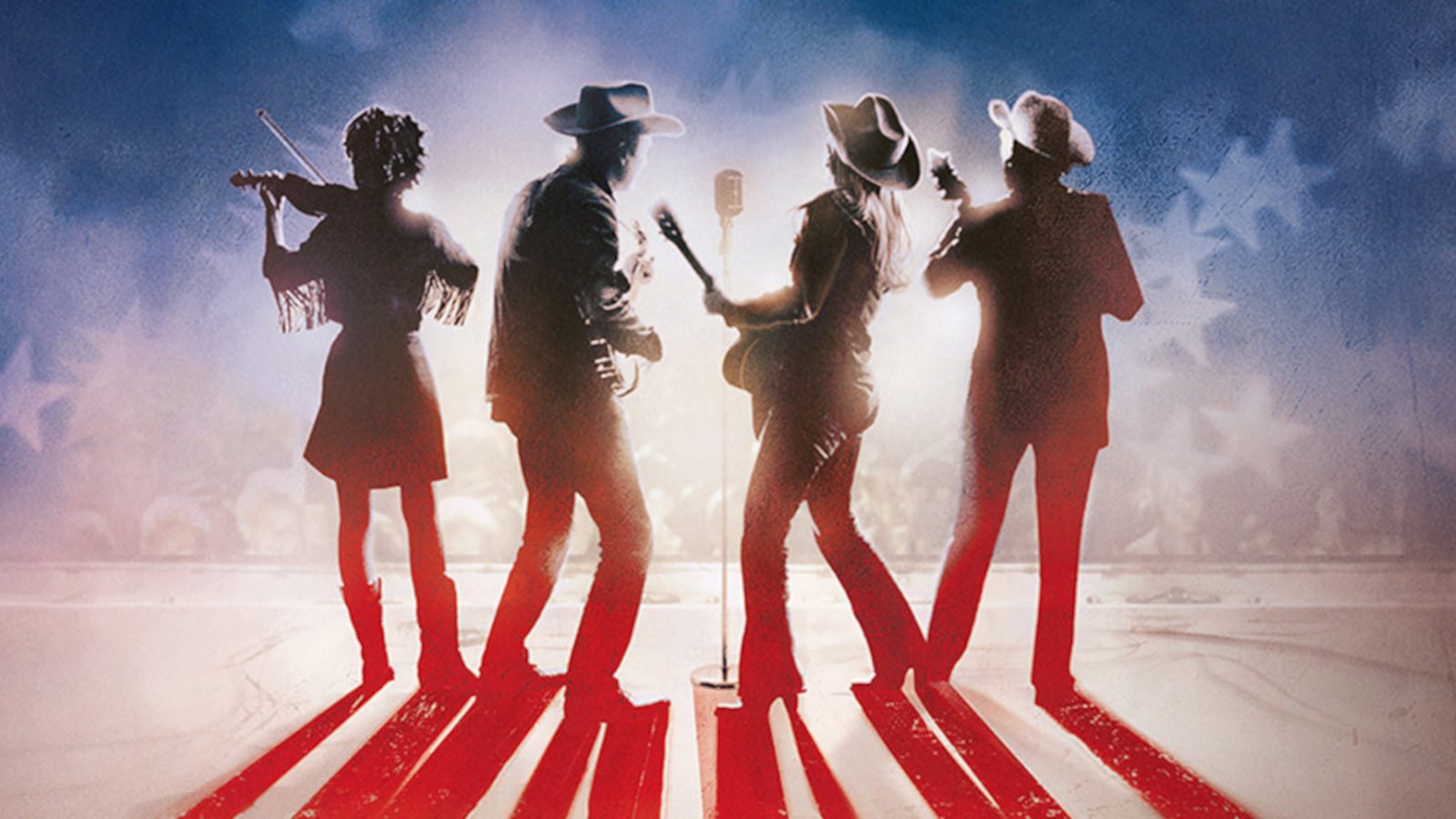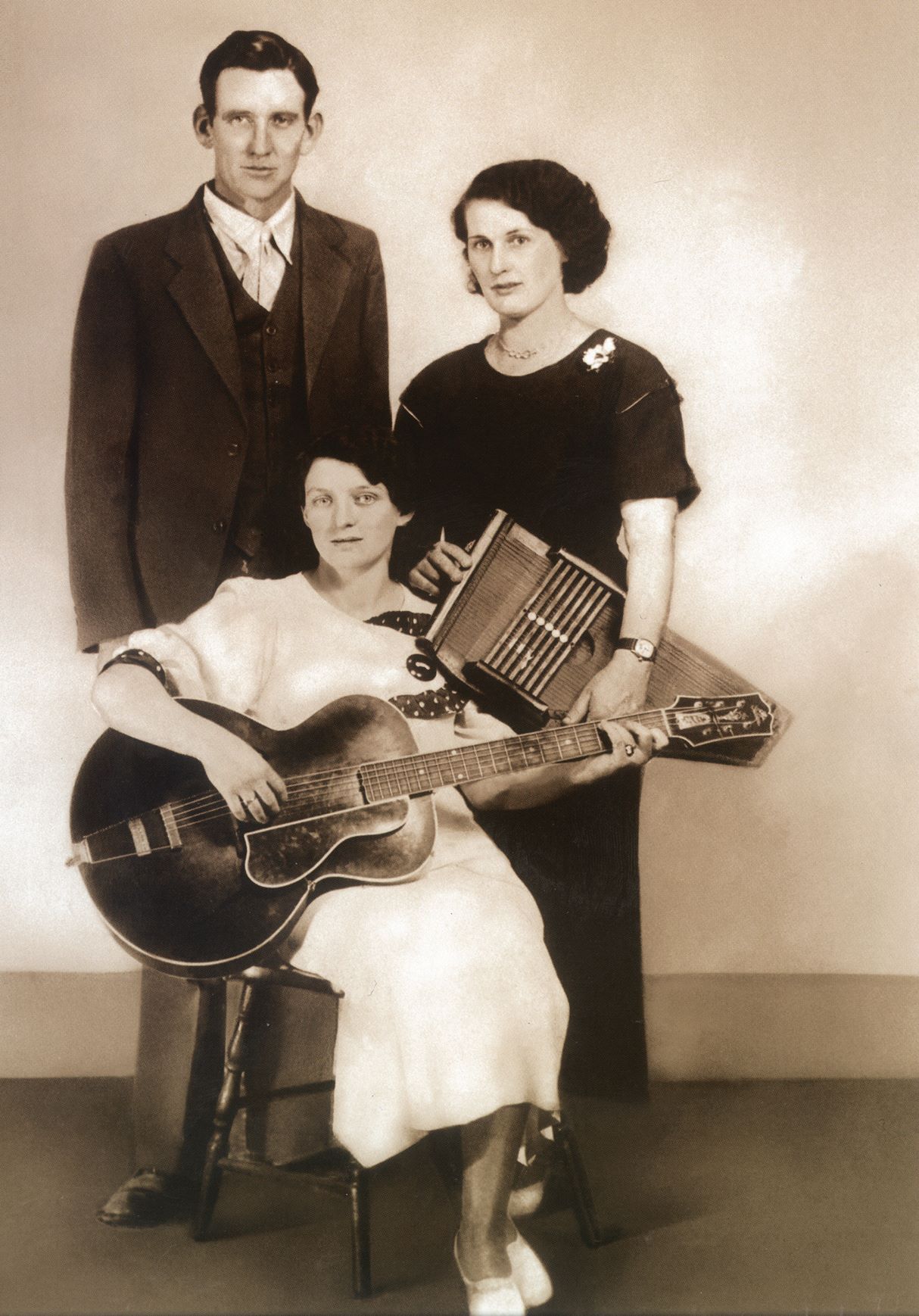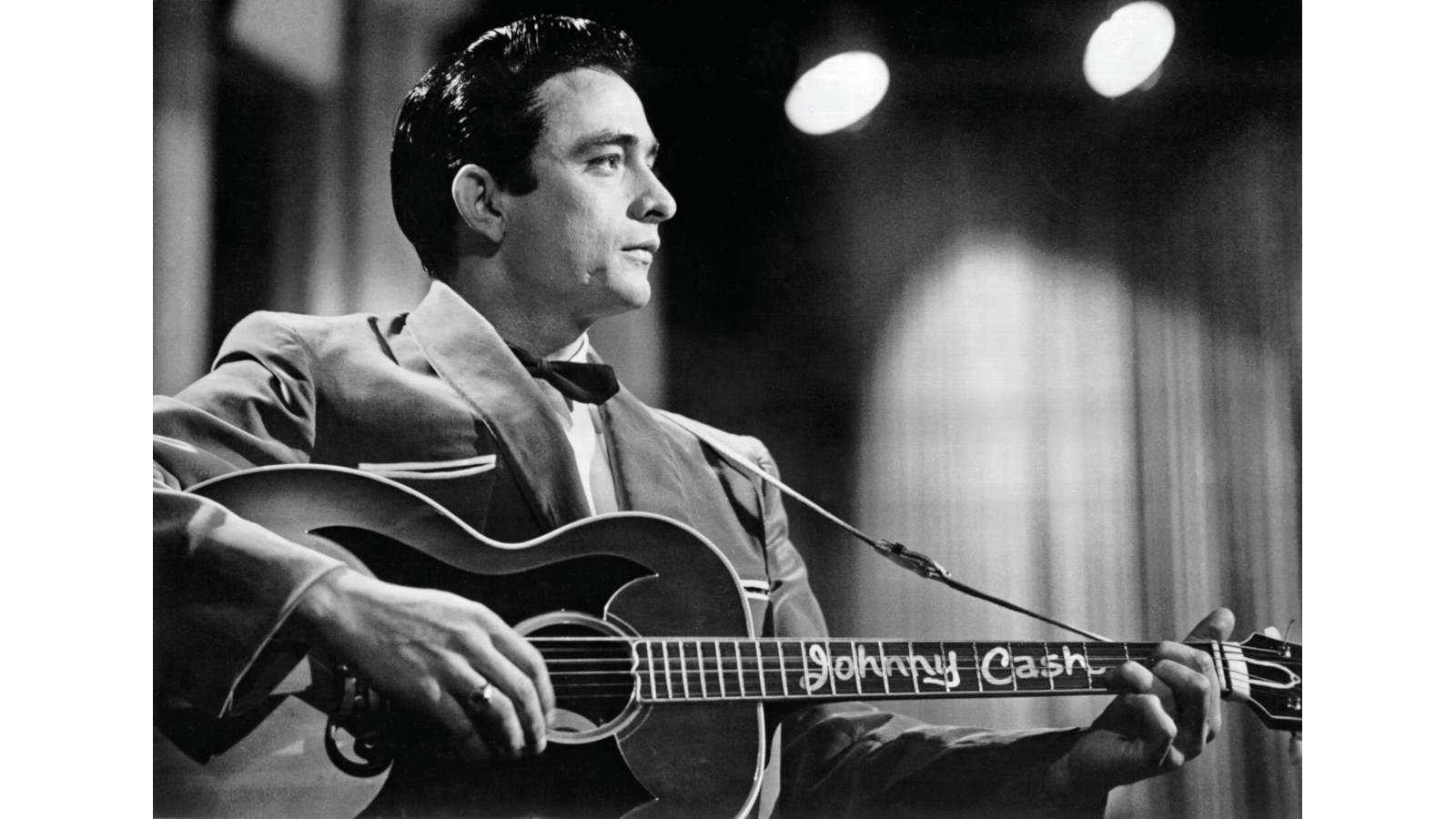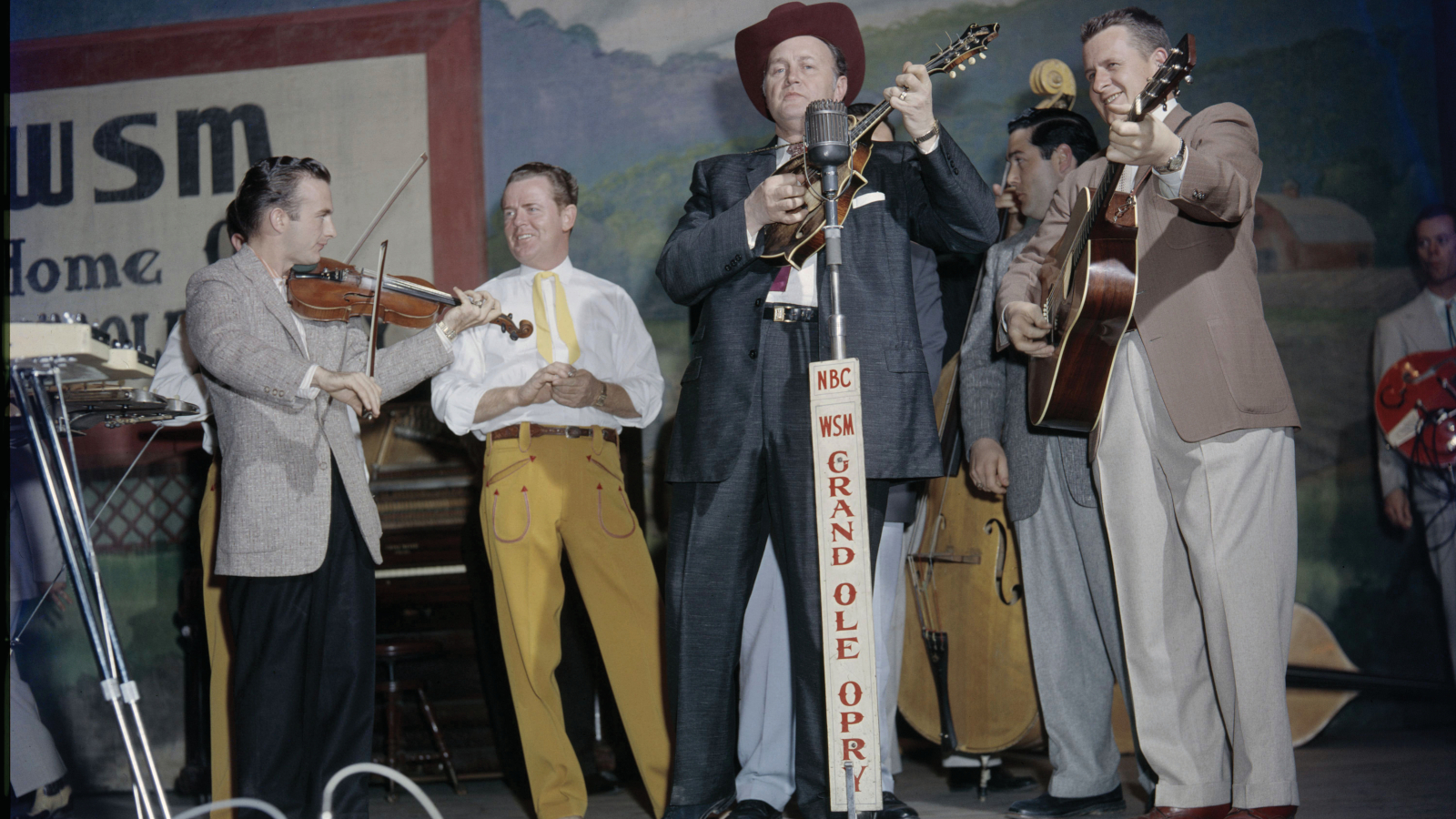"The First Lead Guitar Player in Country Music Was a Woman": Country Star Vince Gill and Documentarist Ken Burns Talk American Music History
The acoustic aficionados “walk the line” through the endlessly interesting trail of ‘Country Music’

***The following appeared in the December 2019 issue of Guitar Player***
Documentarist Ken Burns isn’t a guitar player, but he is the Hendrix of history. His film Country Music is another virtuosic piece from the man whose previous documents of Americana explored the worlds of jazz and baseball.
Burns has a gift for getting to the heart of his subject matter sociologically. “Country music is made by people who are working hard but getting no respect,” he says.
It turns out that Burns also understands players, as evidenced in the following conversation when technical aspects come up or someone draws comparisons between Eddie Van Halen’s shredding and Earl Scruggs’ banjo rolls.
Vince Gill is one of country music’s premier guitar and mandolin pickers as well as a member of the ultimate country-rock crossover band, the Eagles. The Oklahoma native’s latest album, 2019’s Okie (MCA Nashville), is a classic acoustic storyteller affair, featuring copious silky vintage Martin tones.
Along with the impossibly talented and knowledgeable Marty Stuart, Gill is one of the primary artists Burns utilizes in the film, often with an acoustic guitar in hand, to further illustrate his brilliantly colorful portrait.
In this interview, Burns and Gill “walk the line” through the endlessly interesting acoustic trail of Country Music. The 16-hour epic, which premiered on PBS on September 15 in 2019 as an eight-part docu-series, is available in multiple video formats with bonus content.
The film’s soundtrack, available from SMG/Legacy Recordings, spans five discs, and there’s also a comprehensive companion hardcover book, Country Music: An Illustrated History (Knopf), written by Burns and his longtime collaborator Dayton Duncan.
The whole shootin’ match kicked off in March 2018 with a concert at Ryman Auditorium, the Mother Church of Country Music, in Nashville.
The resulting PBS special, Country Music: Live at the Ryman, features unforgettable performances by Stuart, Gill, and a gang of other country stars.
Can you comment on the acoustic aspect of country music’s origin story as presented in your film?
Ken Burns The roots go back centuries. The fiddle comes over from the British Isles, and the banjo from Africa. But the music is going to coalesce at the time recordings can be made and, most importantly, broadcast to an audience for this new kind of music.
So country music is created at first in 1923 when “Fiddlin’” John [Carson] is recorded, and then in ’27 when the big bang takes place with the recording of the Carter Family and Jimmie Rodgers.
Vince Gill It’s important to emphasize that the banjo did come from African slaves, and that black culture was every bit as important as white culture in how this music came to be.
Black culture was every bit as important as white culture in how this music came to be
Vince Gill
Can you address the timeline of the main fretted instruments?
Burns No one can ever know the timeline precisely, because we’re dealing with an oral folk tradition for many centuries. And even in the United States, you don’t know at exactly what point the fiddle is supplanted, or at least augmented, by the banjo, mandolin and guitar.
But by the time of what we consider country music, Mother Maybelle Carter is playing an acoustic guitar with an adaptation known as the Carter Scratch, hitting the rhythm and the melody at the same time. It sounds like more than one instrument playing the accompaniment.
Just earlier today, Vince was playing one of the early Carter tunes, “Wildwood Flower,” doing the Carter Scratch, and it sounds so beautiful. You feel like you’re right there in the Garden of Eden, when everything is starting.
Vince, you demonstrate the Carter Scratch in the film.
Gill Yeah, but I don’t do it like she does. She plays with a thumb pick and, and I don’t really play with any picks. So when I try to play like that, it’s a bastard style of what she did, which was play the melody with a thumb pick while keeping the rhythm going on top.
The film says she had a Gibson, then made some money and bought an even bigger one. Is that the L5?
Gill I believe so. That was the holy grail. When all of this began, there was no amplification. Guitars had always been small parlor instruments with gut strings until Martin started utilizing the strength of X bracing on tops that could support steel acoustic strings. The acoustic became louder and louder, with better sustain.
As a knucklehead that loves old guitars, I think it’s fun to see what everybody was playing as manufacturers were trying to make bigger and bigger instruments that would project more.
Eventually there were pickups and amps that players used to be heard over the roar of the honky-tonks. All that stuff is really what dictated the changes in the way the instruments were made, and why.
And country music goes back to Mother Maybelle playing an L5. I love it that the first lead guitar player in country music was a woman. That’s powerful.

Burns One of the surprising things for me making this series is just how prominent women are from the very beginning. You can’t say that about jazz, which is a male fraternity that barely let in Billie Holiday, Ella Fitzgerald and a handful of others.
The first lead guitar player in country music was a woman
Vince Gill
It’s incredible that the Carter Scratch becomes the dominant guitar style. Moving over to banjo, you’ve got the two mains ways of picking: claw hammer and the three-finger style popularized by Earl Scruggs.
The mandolin comes into its own when Bill Monroe shreds bluegrass on it. Just like Charlie Parker and bebop, bluegrass is this new, modern form of country music that is an acoustic accomplishment of the highest order.
We get to see so many kick-ass acoustic instruments in Country Music. Which ones stand out as the most iconic?
Gill I’d say Mother Maybelle’s L-5, Bill Monroe’s [Gibson] F-5 mandolin, Earl Scruggs’ banjo and Jimmie Rodgers’ Martin OM-45 [technically a 000-45] are some of the most iconic.
Is that the guitar that has “Jimmie Rodgers” engraved on the fretboard and “Thanks” on the back?
Gill Yes, and that’s where Ernest Tubb got it.
Isn’t it interesting to see the slew of players, including Lefty Frizzell, who followed suit and had their names engraved on the fretboard?
Burns If you think about what a fretboard looks like, inserting the letters of your name there is similar to a marquee. It’s another form of advertising.
Gill Exactly. Players would also engrave their names on pickguards.
We have to give country music the award for inventing bling
Ken Burns
Like Loretta Lynn and Johnny Cash. It’s wild to see those huge pickguards on both sides of the soundhole on their acoustics.
Gill Some of those giant pickguards covered the whole guitar body. Nobody does that anymore, because most people would agree that the guitar doesn’t sound as good if the top can’t vibrate as much as possible. But that’s what was so cool about classic country style. It was everything from rhinestones to those crazy, pointed, cutout pickguards.
I always liked Fender acoustics with those six-in-line headstocks. They didn’t compare well sonically to a Gibson or a Martin, but they sure looked cool. I don’t remember the model, but I bought one of Jimmy C. Newman’s guitars because of nostalgia. He was the first guy that ever introduced me on the Opry, so I picked that up when it became available.
“Little” Jimmy Dickens had a flashy style. He also stands out because he’s playing what appears to be a Gibson jumbo, and he’s such a little guy that it looks like he’s wearing a tank.
Gill He was a great pal, and I think he chose that guitar for that very reason – because it was the biggest. It worked for him. I believe that in the early days he played a great late ’40s or early ’50s Gibson J-200. He had several as his career went on. Some were newer than others. Some had more sparkles.

That’s more in the hip-hop culture now. If any hip-hop artists really played acoustic guitars, they would probably…
Gill They would bedazzle them. [laughs]
Burns We have to give country music the award for inventing bling. From the outrageous rhinestones to dressing in Nudie suits – it’s part of showmanship.
Elvis represents that attitude in the film as well. I love when the film mentions that Elvis liked his early Martin so much that he used letters made of stickers to put his name on the body.
Gill Kind of like you’d put on a trailer.
Burns Isn’t that fabulous?
I bought one of Jimmy C. Newman’s guitars because of nostalgia. He was the first guy that ever introduced me on the Opry
Vince Gill
He even had a D-28 wrapped in leather that’s hanging in the Martin Museum.
Gill Talk about a tone killer!
Would you care to comment on how he and Johnny Cash’s careers break out from the same place and time, Memphis in 1957, but then Elvis goes off to make rock history while Cash becomes a country legend?
Burns Elvis’ first record is “Big Boy” [Arthur] Crudup’s “That’s All Right,” which is an R&B tune, on the A-side, and Bill Monroe’s “Blue Moon of Kentucky,” which is obviously a hillbilly tune, on the B side. That tells you where rock and roll is born.
Cash is most associated with the D-35, but that’s not what he’s holding when he’s shown playing his first hit, “I Walk the Line.”
Gill It couldn’t have been because Martin didn’t start making the D-35 until the ’60s [1965].
Hank Williams is first shown playing a Martin and then, later, a Gibson. What do you know about his guitars?
Gill The same thing. I don’t think he ever played a herringbone Martin. I saw what was probably a late-’40s D-28, and then later a Gibson that might be a Southern Jumbo. Those are the two guitars I associate with him, and I don’t know why he made the switch.

Do you know about the tiny parlor guitar Marty Robbins is shown with during his performance of “El Paso”?
Gill I don’t know the model number, but they made tiny three-quarter-size guitars. [This turns out to be a Martin 5-18 terz guitar.] I do know that the guy who played all the great leads throughout “El Paso” was actually Grady Martin. I’m not sure what he played, but it wasn’t a gut string. Everybody thinks it was, but it wasn’t.
Interestingly, Willie Nelson is the only gut-string player spotlighted in the film. But his instrument isn’t mentioned, aside from his hilarious anecdote that he had to hock it so many times that the pawnshop owner could play it better than he could.
Gill [laughs] I don’t think it’s a rare model, just maybe a late-’50s or early ’60s gut-string Martin [N-20] that didn’t sell for a whole lot of bread. That’s been his guitar of choice to play for 60 years.
I don’t like that Van Halen analogy... I’m not sure that I respect Eddie Van Halen that much to put him in the same discussion
Ken Burns
Perhaps the ultimate player quote in Country Music is when John McEuen says, “The same thing that Eddie Van Halen brought to rock and roll shredding guitar, Earl Scruggs brought to the banjo. It was so fast that it excited people. He wasn’t the first person to play with a three-finger roll, but he was the first guy that came to Nashville with it.”
Gill The way Earl played banjo defined the sound of bluegrass. Bill Monroe had the mandolin chops, the rhythm, the songs, the singing and all of that. But to me, Earl’s banjo was what put bluegrass on the map.
Burns I don’t like that Van Halen analogy. I’ll refer to the analogy I made earlier, which is that bluegrass is the equivalent of the modernist instinct that took swing music and permitted Charlie Parker and Dizzy Gillespie to create bebop.
String-band music was too predictable to contain a talent like Bill Monroe, and what he fashions out of it is bluegrass, which has the same kind of propulsive virtuosic speed. It takes a certain player to do it. Earl then comes in on the banjo and represents that same impulse.
I’m not sure that I respect Eddie Van Halen that much to put him in the same discussion. I’d rather go back and say that what Dizzy Gillespie is doing on the trumpet and Parker on the sax is the better comparison to what Bill Monroe is doing on the mandolin and Earl on the banjo.

It’s not in the film, but Tony Rice is the acoustic guitar player that eventually comes along to take bluegrass to the next level – newgrass – by infusing jazz sensibilities.
Burns Sensibilities is exactly the perfect word. And that leads to my other argument: Somehow, commerce and convenience have turned country music into sort of an island nation, as if it’s not connected to the other forms. It is connected in every way to every form, including jazz, the blues, R&B, folk, pop and even classical music.
And, of course, country music is one of the parents of rock and roll. So it’s not some isolated thing, and it’s not impossible to find a Tony Rice being able to come in and transform things, because the music is always seeking to be transformed.
Country music is one of the parents of rock and roll
Ken Burns
What’s the story on the guitars that Martin provided for Country Music?
Burns Martin ended up providing three guitars for us. The one that I’m appearing with in the press has the Country Music logo on it and my signature in it. Whenever we were interviewing an artist during the making of the film, we took the others along and asked for a signature.
Both are now covered in autographs by everyone from Merle [Haggard] to Marty [Stuart]. We may eventually auction them off for charity, but they are on currently on display at Belmont University in Nashville, where they have an amazing guitar collection. Everyone should see that too.

Order Country Music on DVD and Blu-ray here.
Get The Pick Newsletter
All the latest guitar news, interviews, lessons, reviews, deals and more, direct to your inbox!
Jimmy Leslie has been Frets editor since 2016. See many Guitar Player- and Frets-related videos on his YouTube channel, and learn about his acoustic/electric rock group at spirithustler.com.
“I’m still playing but I’m covered in blood. Billy’s looking at me like, ‘Yeah! That’s punk rock!'” Steve Stevens on his all-time worst gig with Billy Idol — and the visit to Jimi Hendrix's grave that never happened
"He goes to England and all of a sudden he's on the floor humping his guitar!” Gene Simmons tells how he, Paul Stanley and Ace Frehley followed Jimi Hendrix's lead and gave Kiss some British swagger










